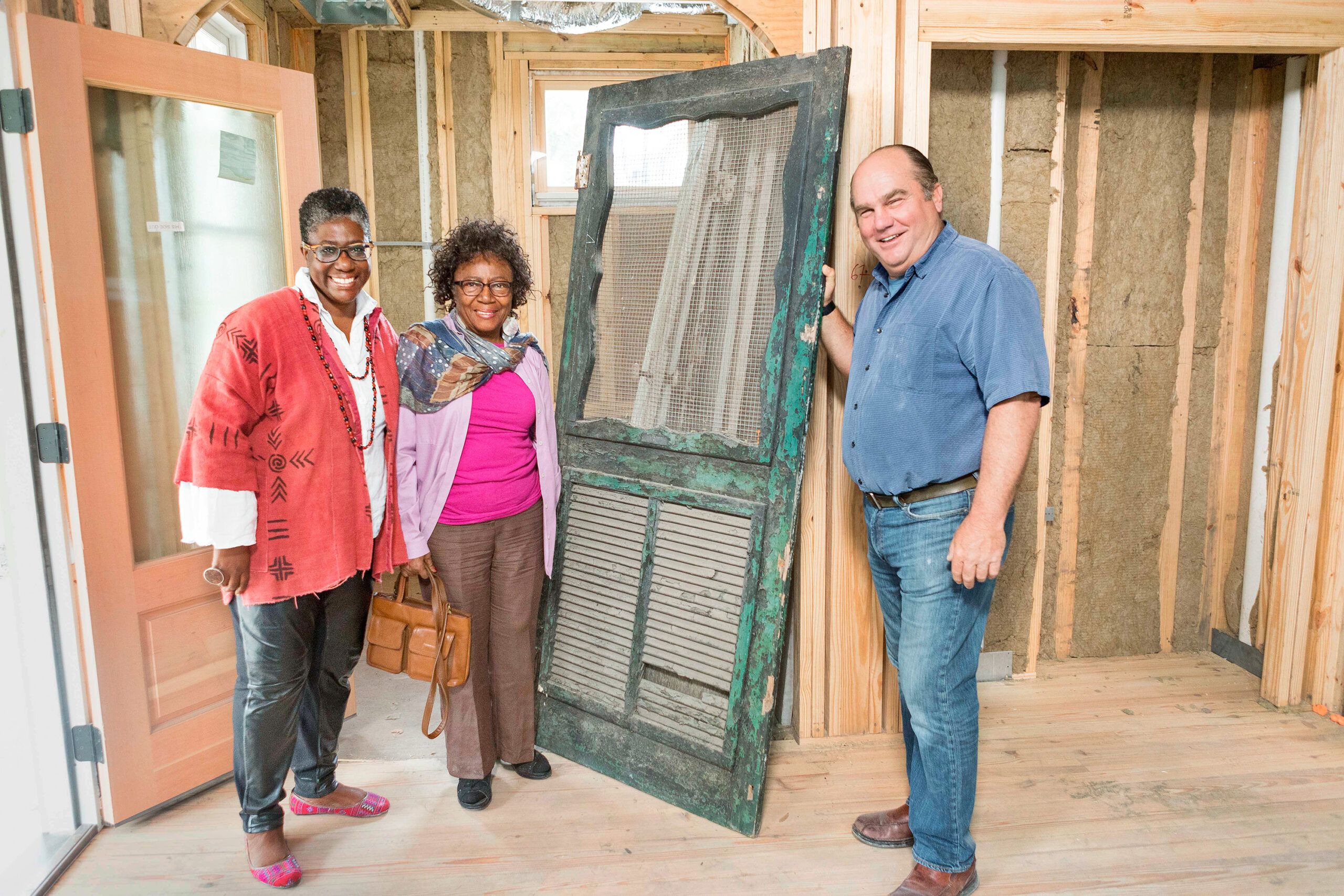Before
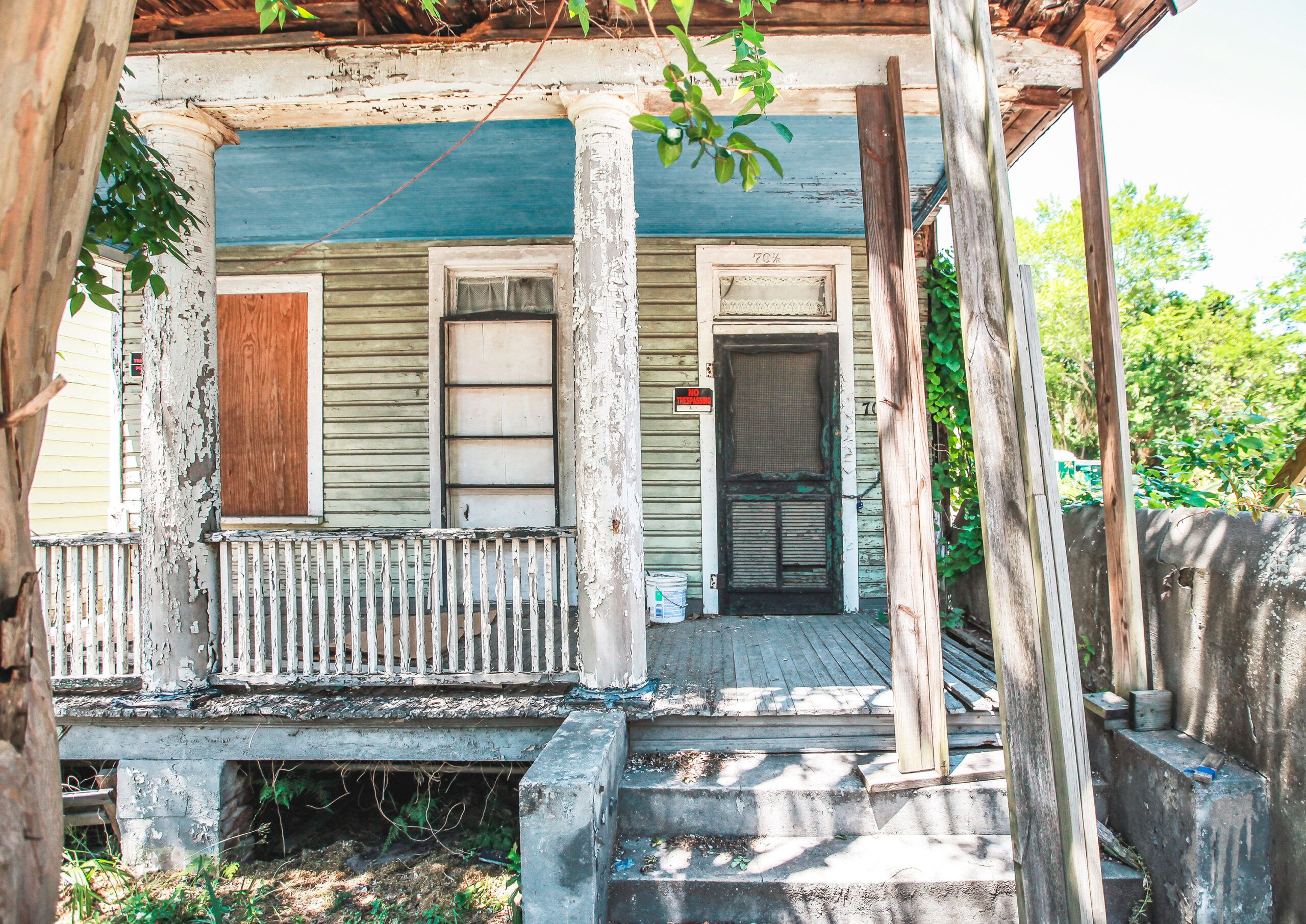
As Judith Aidoo-Saltus stands in the foyer of her 1890s Charleston, SC, house and surveys a beat-up screen door, the decades seem to roll backward. With its warped and gouged wood, peeling paint, and rusted hardware, the door is in rough shape, especially compared with the rest of the home, which is looking refreshed thanks to a down-to-the-studs renovation that is being documented by This Old House TV.
Shown: Water intrusion over the 15 years when the house stood vacant led to widespread rot and termite damage.
Renovation Begins
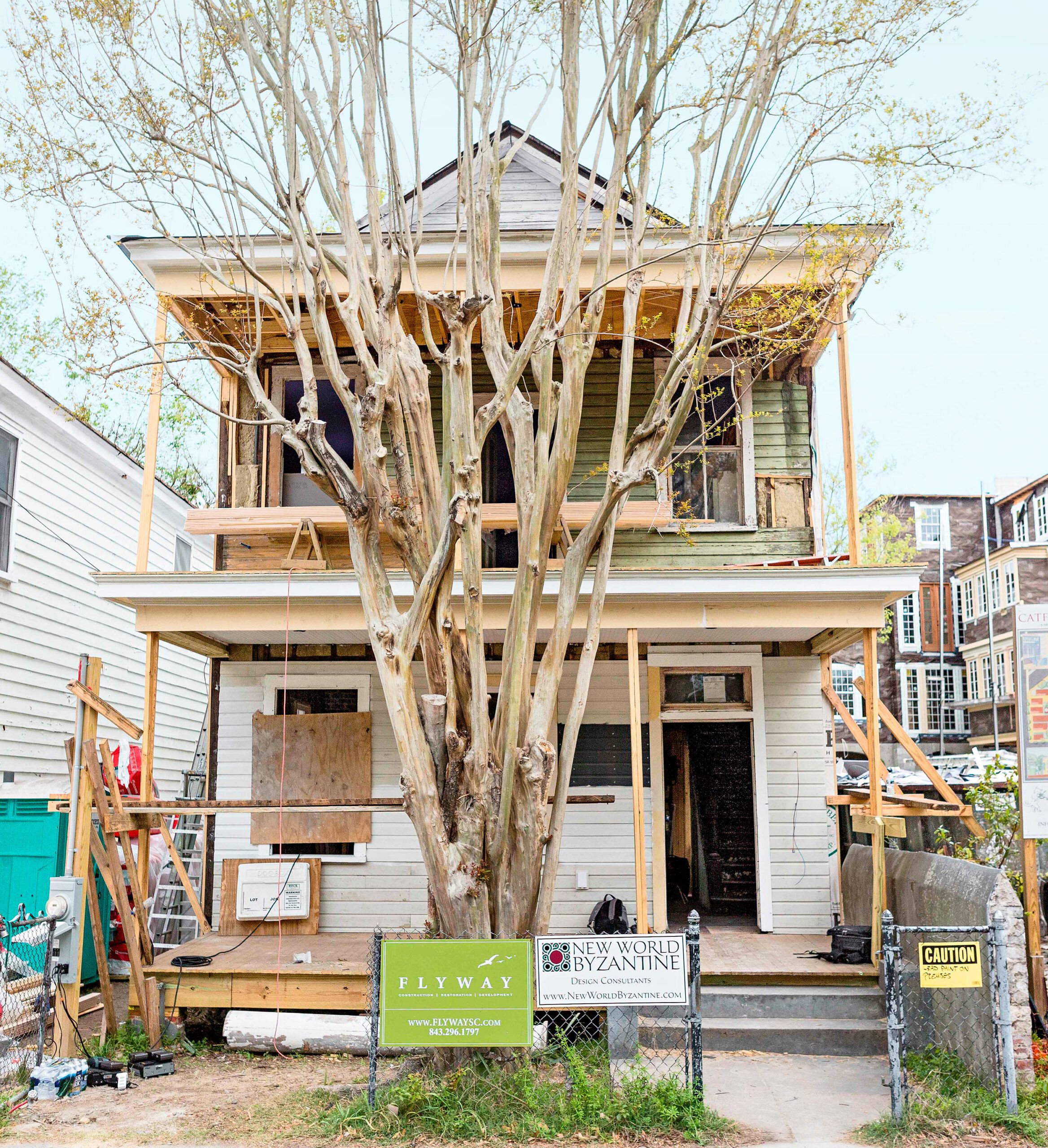
For Judith, 55, the weathered door is something of a time machine, sparking memories of the summers she spent in Charleston with her grandparents. Every year till she was about 12, she traveled to their home from Washington, D.C., where her Charleston-born mother and her father had settled after graduating from Howard University. Judith remembers peering through the door’s scallop-edged screen to catch the breeze and drink in the hustle and bustle of the surrounding Elliotborough neighborhood. “Back then, it was a thriving middle-class black community,” Judith recalls. “We all knew our neighbors, and my grandmother would sit on the porch and hail people as they passed by.”
Shown: The house’s stacked front porches are unusual for Charleston, SC. The massive crape myrtle was planted by the homeowner’s grandmother decades ago.
Mantel Salvage
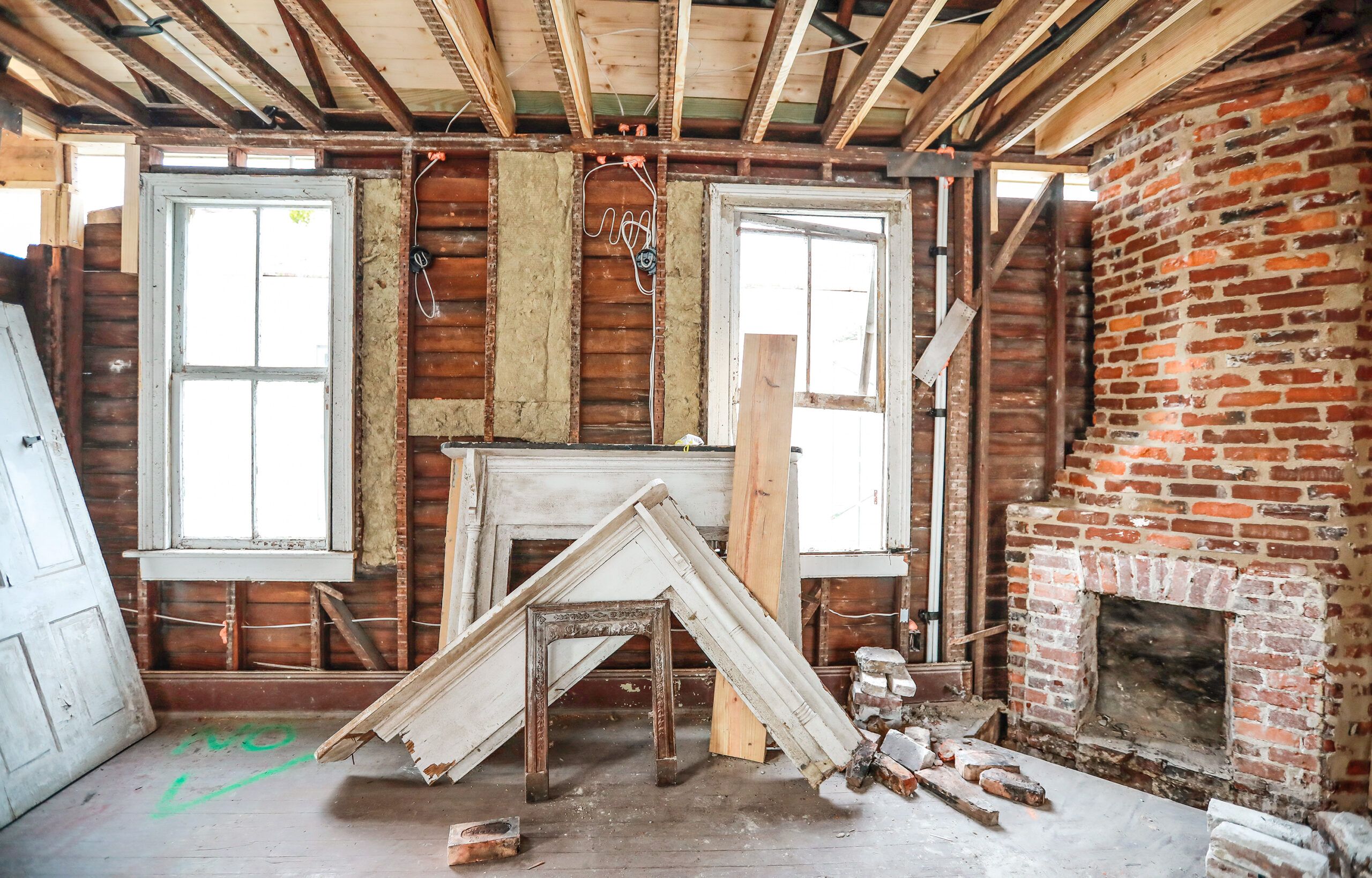
Recent gentrification has changed the fabric of the neighborhood, with new construction peppered in among
the period houses, and lots of upscale restaurants and bars have popped up within walking distance of the house. While she cherishes memories of the close-knit community she knew as a child, Judith also concedes, “It’s good to see the property values going up and the old houses being refurbished.”
Shown: The four original fireplaces will be converted to gas; the brick chimneys required repointing with historically accurate mortar. Two mantels were rotted beyond repair; the two pictured here will be restored and reinstalled.
Silva Survey
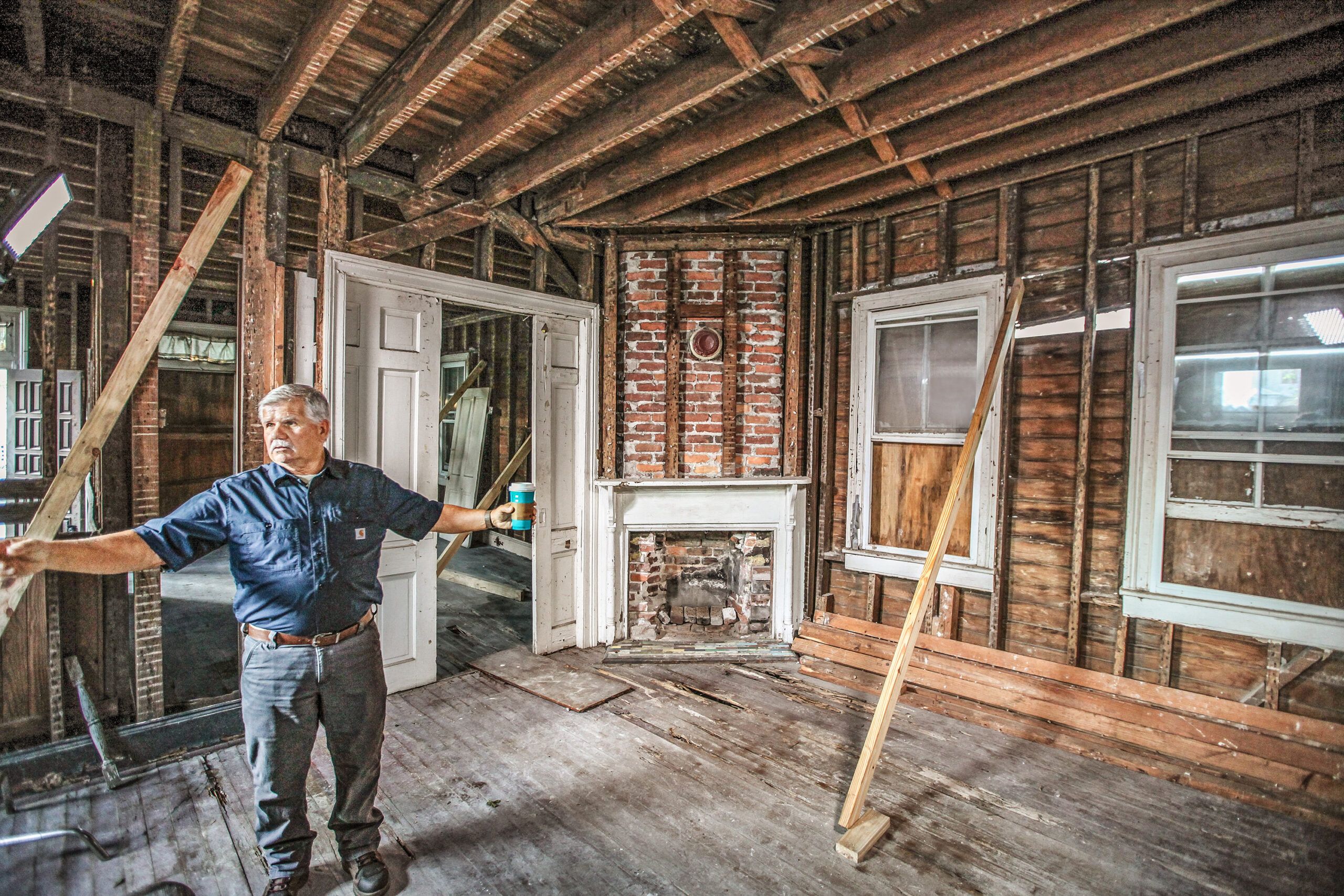
Until recently, hers was one of those old houses in dire need of attention. After Judith bought the 1,900-square-foot two-story from her mother in 1998 (widowed by then, her grandmother had retired to Ghana, West Africa), the house stood empty for more than 15 years. “I always planned to remodel it, but life got in the way,” says Judith, a Harvard Law grad turned investment banker whose work had her splitting her time between first New York, then suburban Washington, D.C., and Ghana.
Shown: Tom Silva surveys the site of an archway that will separate the dining room and the new kitchen.
Homeowner Memories
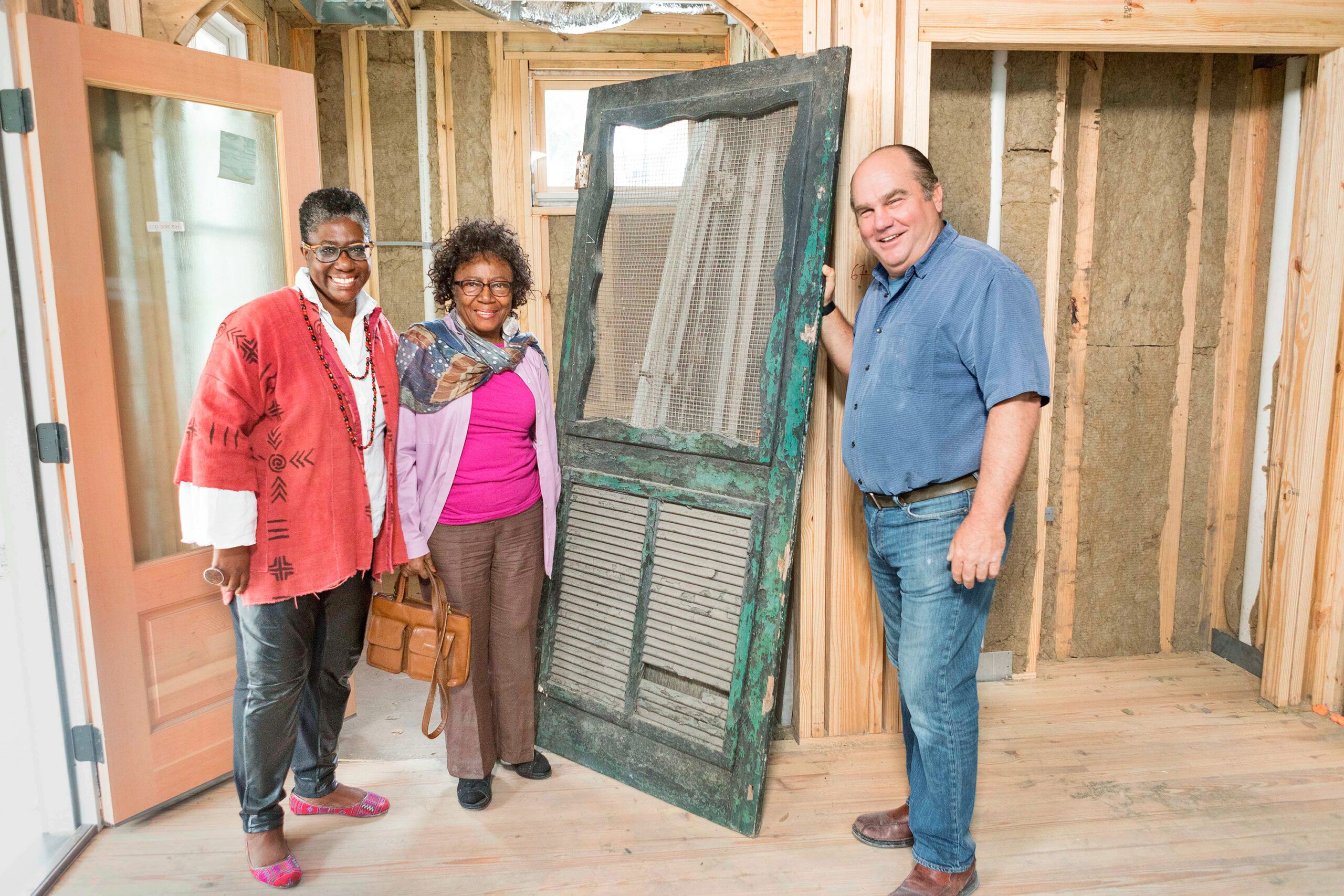
When Judith finally was ready to renovate the home as a primary residence for herself and her wife, Julia Aidoo-Saltus, a native Bermudian who works as a corporate lawyer, there was an enormous amount of labor needed to make the house livable again. Holes in the roof had invited in the elements, and the water intrusion had caused considerable damage. Some beams, trim, and interior doors had been hollowed out by termites. The plaster walls were crumbling, the floors were sagging, and rot had undermined the pier-and-beam foundation. Most of the exterior woodwork was beyond repair; vines and moss grew freely between the Dutch-lap siding.
Shown: Judith Aidoo-Saltus and her mother, Nora Aidoo, share memories sparked by the old screen door with TOH plumbing and heating expert Richard Trethewey. The homeowners plan to refurbish the door themselves.
Archway in Progress
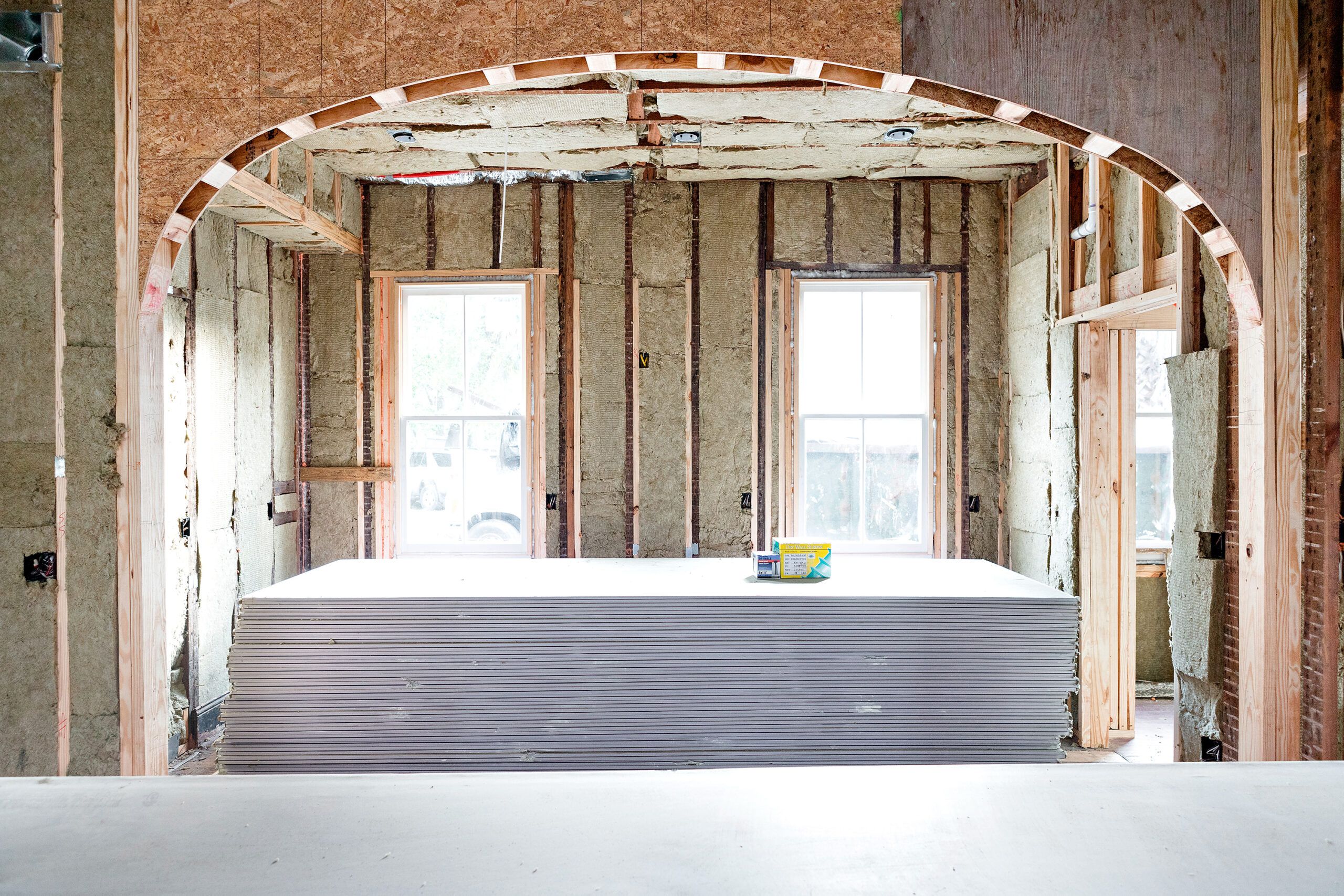
“My first thought was teardown—that it would be better, faster, and almost cheaper to start fresh,” says This Old House general contractor Tom Silva. But Judith’s family connection to the place—not to mention the strict renovation guidelines set by the City of Charleston’s Board of Architectural Review—made that impossible. “So the challenge became how to bring it back, make it look good, and make it last,” says Tom.
Shown: A period-appropriate archway will visually separate the new kitchen from the adjacent dining room in the open-plan layout.
Staircase Tuning
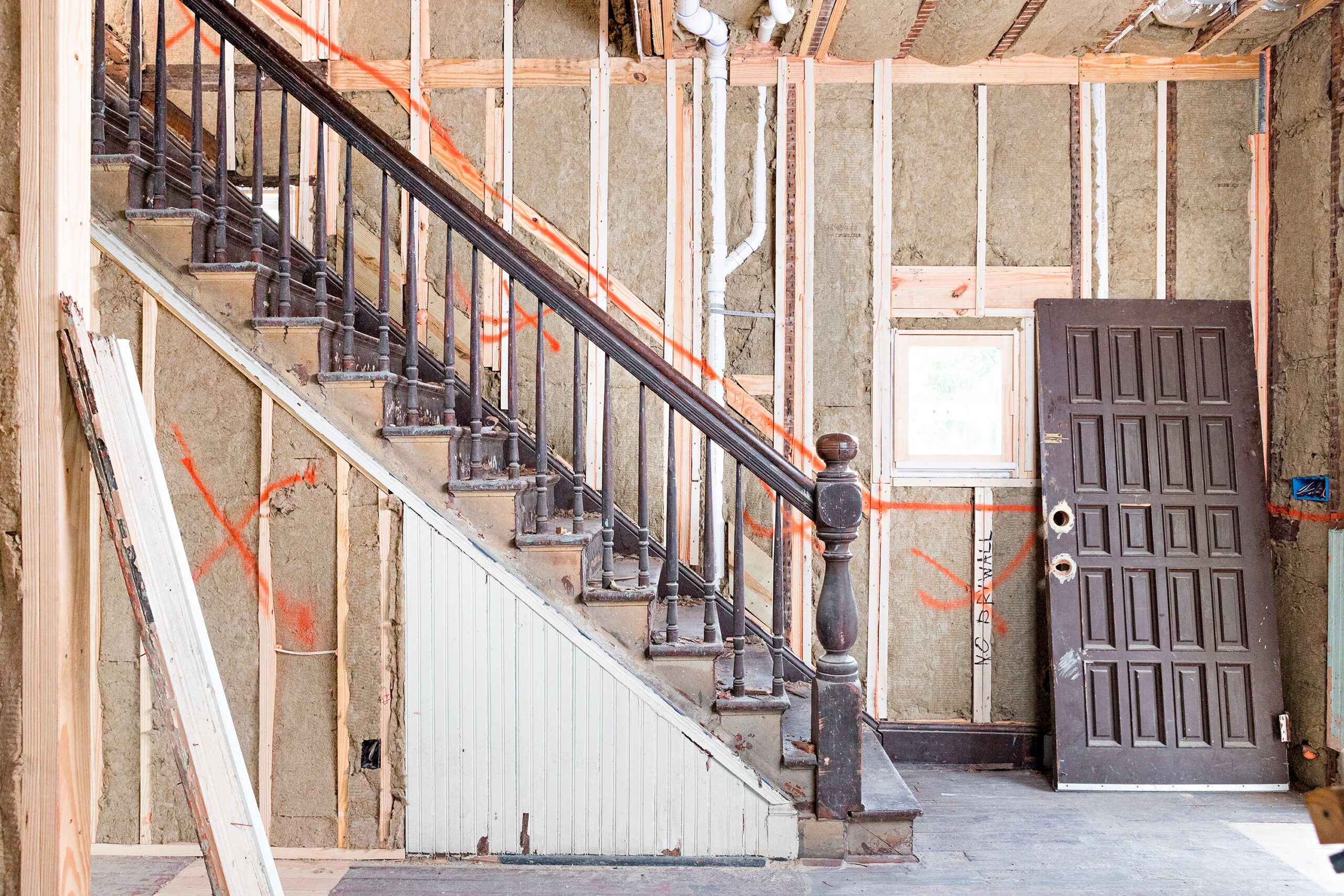
Local architectural designer Andrew Gould, a neighbor whose backyard adjoins Judith’s, drew up blueprints to present to the city, which had to sign off on the project before construction could begin. Protecting and restoring historically significant exterior details, like the double Greek Revival–style porches in front, was top priority. “The great majority of Victorian-era houses in Charleston are single houses, which are one room wide with side porches, so having front porches is not so typical,” Gould says.
Shown: The pine staircase was one of the soundest original features of the home. More beadboard will cover both stairway walls.
Insulation: Rockwool
Tom Checks the Framing
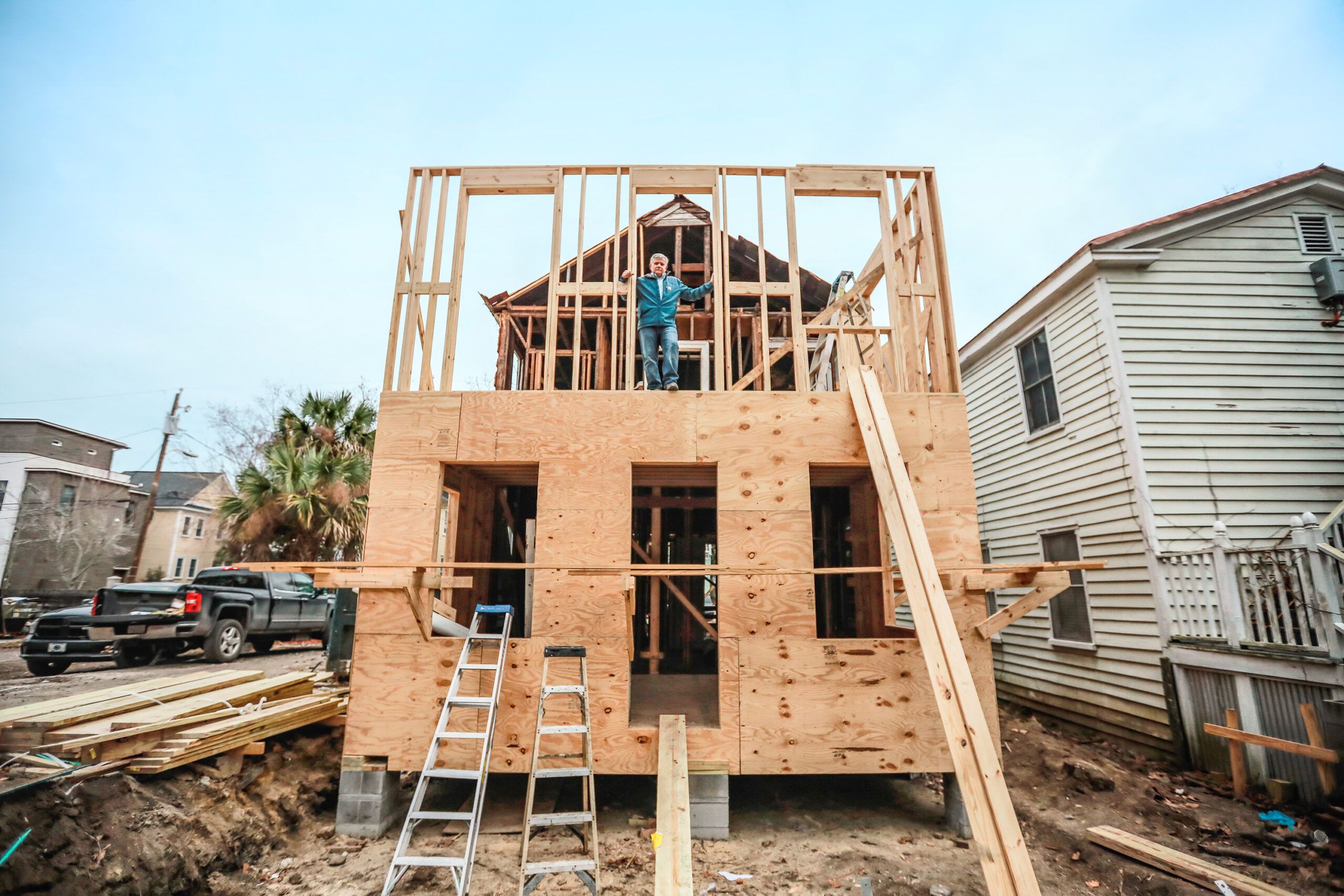
His plans called for rebuilding the porches and refurbishing original interior details such as the staircase, the four fireplaces, and a set of pocket doors between the living and dining rooms. Period-appropriate additions would include two east-facing second-story windows that line up with existing windows below them, and another set of pocket doors between the living room and foyer.
Shown: Tom Silva checks out the framing on the two-story addition, which will hold a guest room on the ground level and a master suite above it.
Stacked Porches
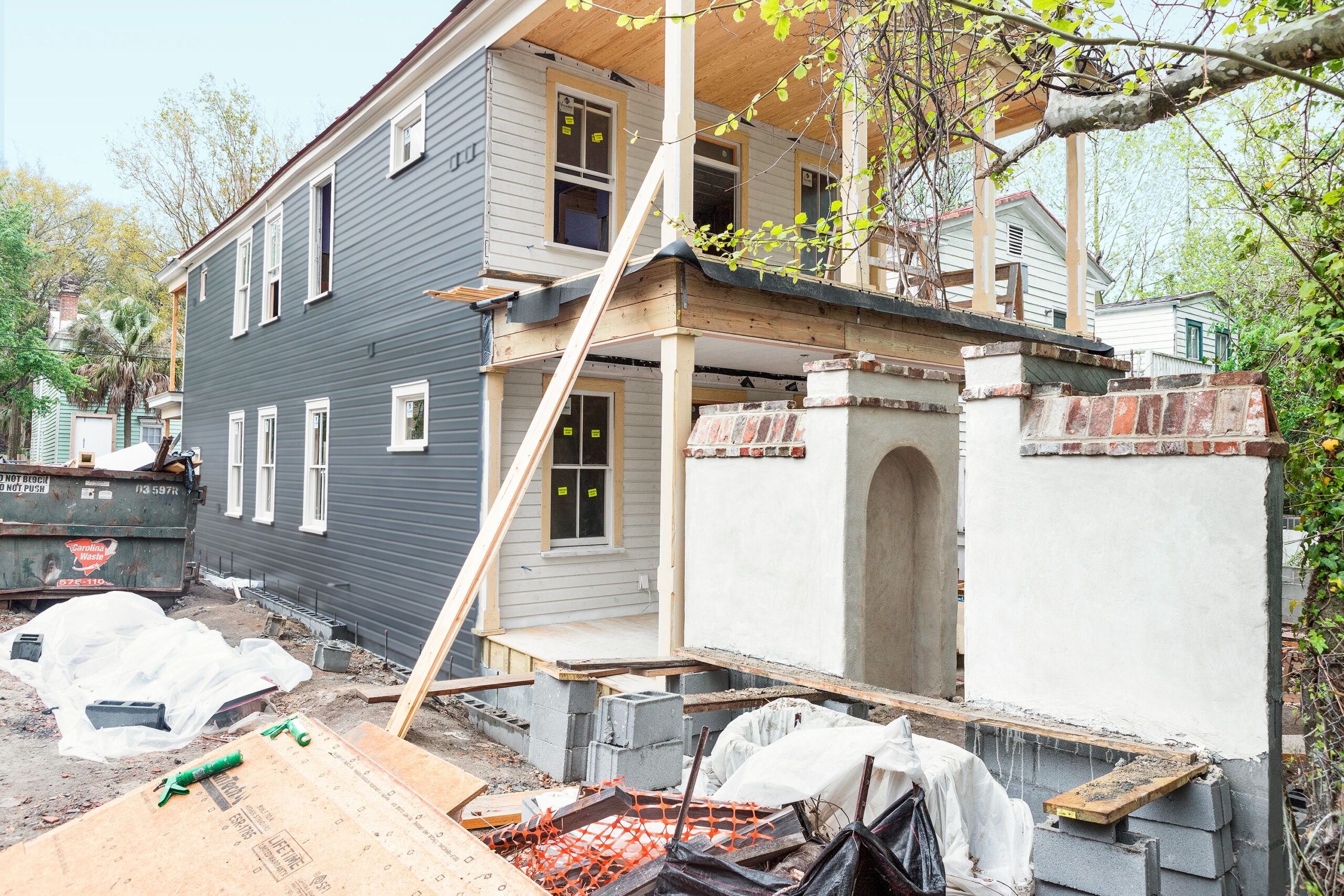
There was a silver lining to the scale of the damage: Since much of the interior woodwork and plaster were beyond rescue, the layout could be tweaked without sacrificing historical materials. At the couple’s request, the kitchen would be relocated opposite the dining room, and opened up. Gould added a period-appropriate arch to visually distinguish the two spaces while allowing for an open flow. Design consultant Niki Komorek mapped out the kitchen’s white flat-panel cabinets and midnight-blue island, which will be finished with marble-look quartz countertops.
Shown: New stacked porches in back echo the original Greek Revival–style front porches, but with simpler square columns.
Old Meets New in Elliotsborough
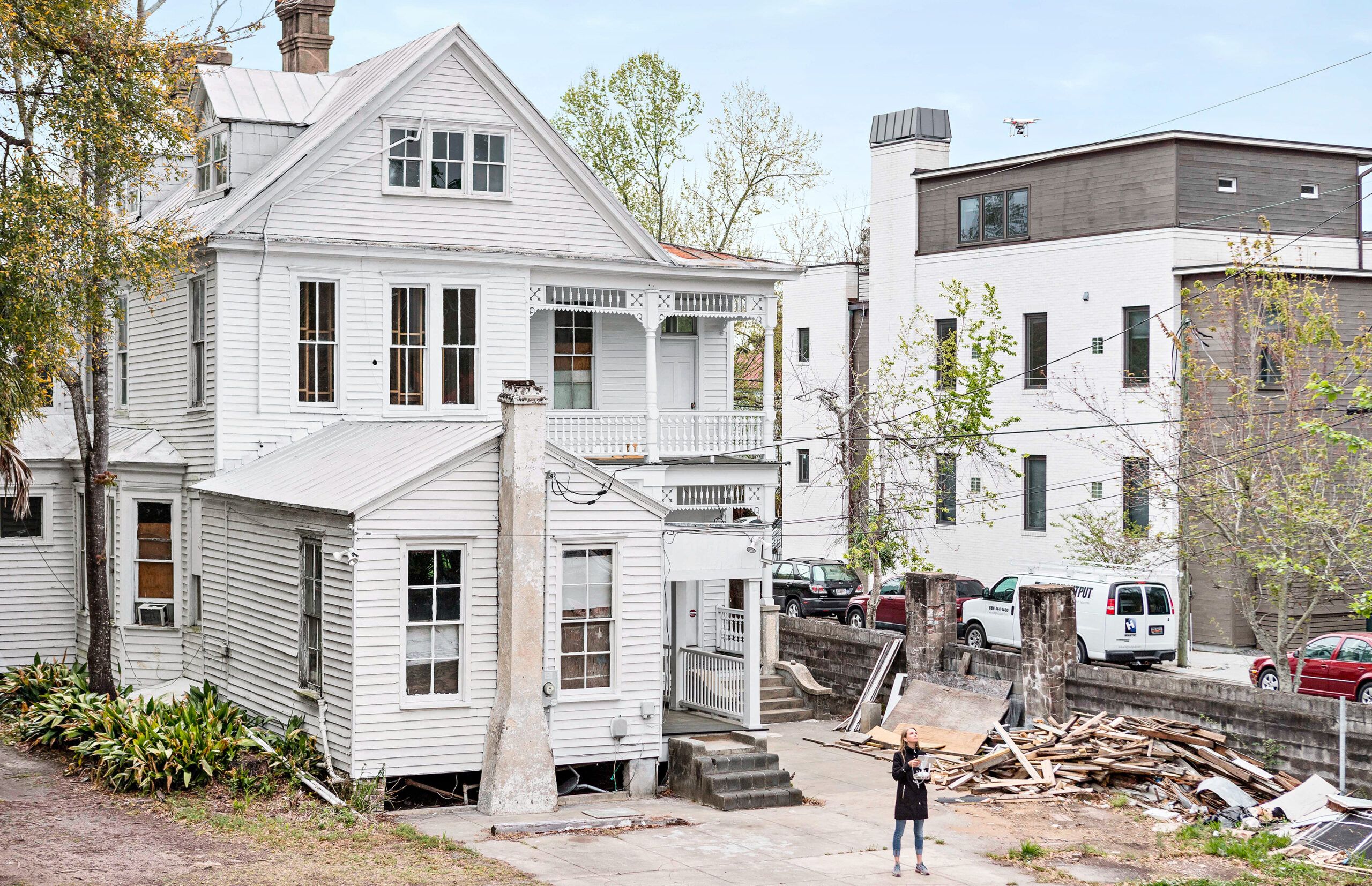
The city green-lighted a two-story addition in back with a guest room on the first floor and a master suite above it. A second set of stacked porches in the rear will echo those in the front, though with simpler square columns to distinguish them as less formal. The porches will overlook a walled back garden with a pergola gate and an arched entry.
Shown: Nearby homes—one Victorian-era, another built in the last five years—offer a snapshot of the changes in the rapidly gentrifying Elliotborough neighborhood, where new-builds are increasingly peppered in among the historical homes.
Tall Arches
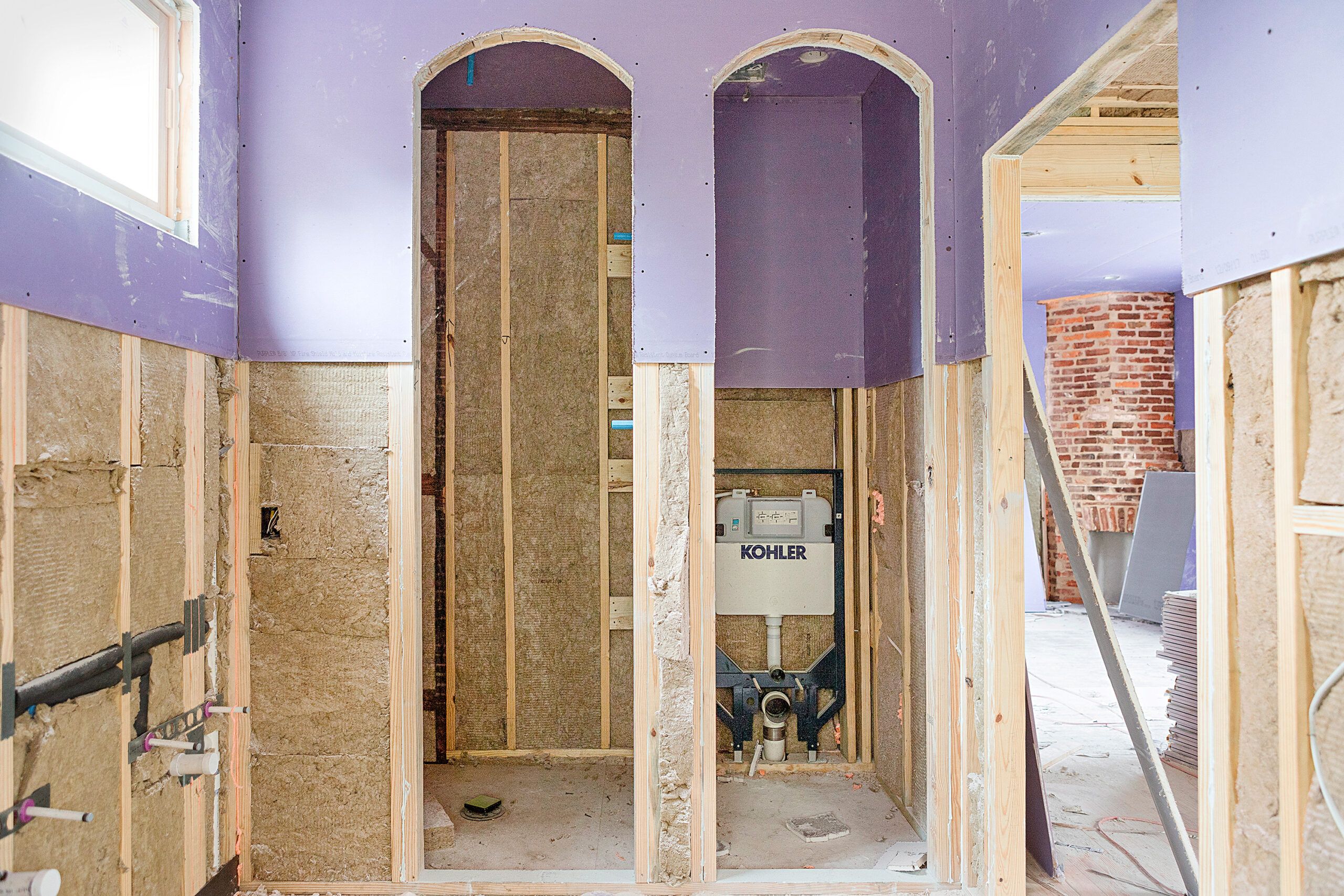
The house’s condition presented plenty of building challenges for Flyway Construction, the local contracting firm. When the team discovered that the existing kitchen add-on they had pledged to salvage was beyond hope, they had to seek city approval for the additional demo and construction, unanticipated extra work that added about three weeks to the timeline. “The main structure was so rotted that it was out of square by five or six inches,” says project manager Bridges Williams. “We not only had to reframe the existing structure but also rebuild the addition and align the two.”
That was only after attending to the foundation, which meant jacking up the house, replacing rotted girders, adding new piers, and repointing the existing ones.
Shown: In the newly constructed master bath, narrow arches frame the entrances to the shower and the WC.
Fragile Porches
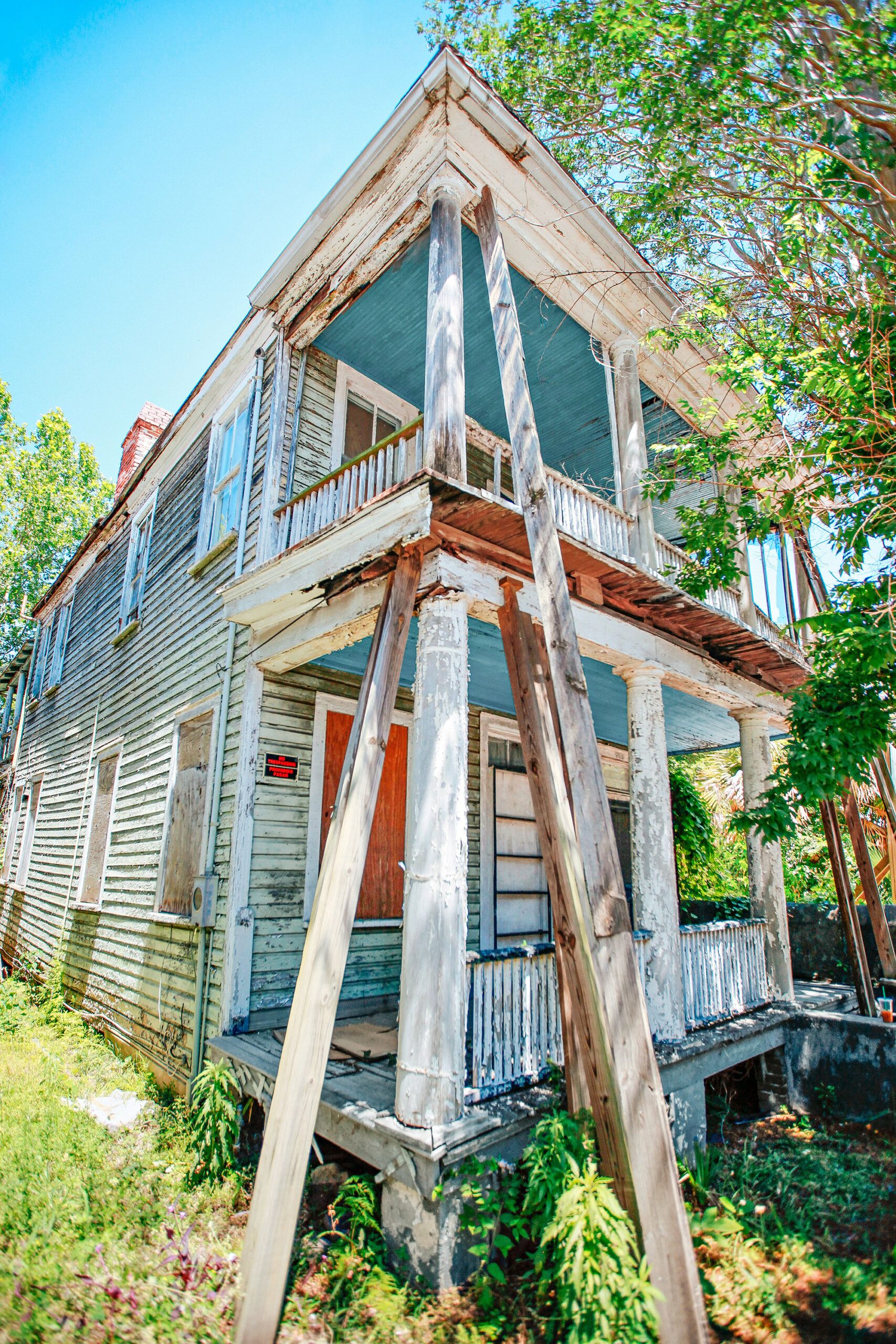
All-new wiring, plumbing reinforcements, and a forced-air HVAC system were needed too, with ducts tucked in closets, cabinets, and behind a tub.
Soon drywall will lend the rooms a more finished look, and the new kitchen and baths will start to take shape. Judith and Julia will refinish the old screen door to get it ready to be hung on the back porch. Local interior designer Taylor King is busy helping them choose paint colors and furniture.
Shown: The existing front porches were structurally unsound and in danger of collapse from rot and termite damage.
Exterior Face-Lift
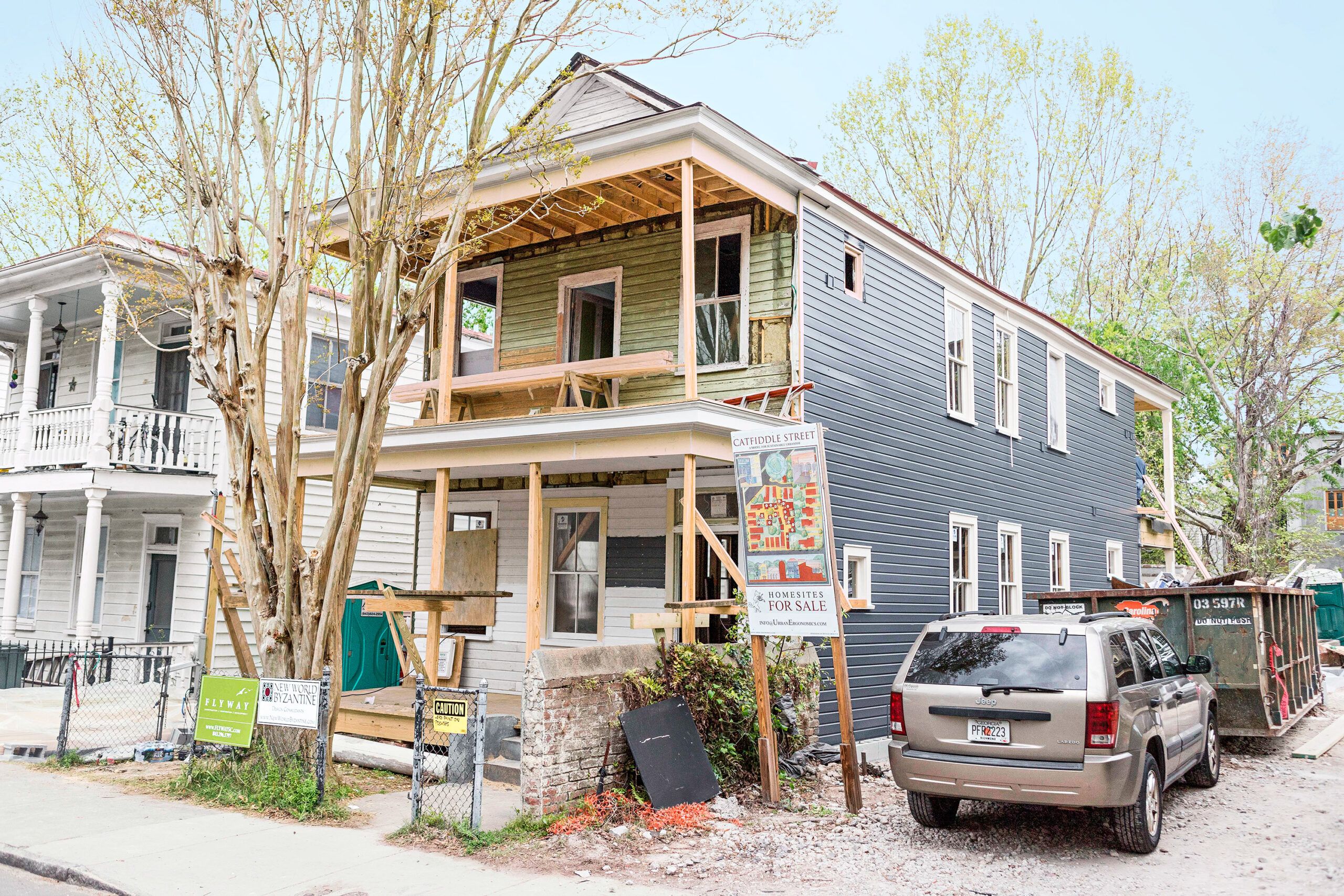
The couple are excited to bring life back to the home, a place, as Judith recalls, where friends and neighbors once gathered for rounds of pinochle and plates of okra gumbo and sweet potato pie. “It was a lovely house before,” says Judith, “and hopefully it will be again.”
Shown: With its Dutch-lap siding restored and rotted sections replaced, the house is being painted a warm gray.
Paint: Sherwin-Williams’s Cyberspace
Elements Worth Saving

Intact elements on view just inside the front door include the pine staircase (a powder room is going in underneath it), the living room mantel, and a pocket door.
Studied Laughter

When a house you’re going to call home looks like this, what else can you do but laugh? Julia and Judith Aidoo-Saltus in a pre-reno bedroom that will become a study.
Coming Soon: Guest Suite
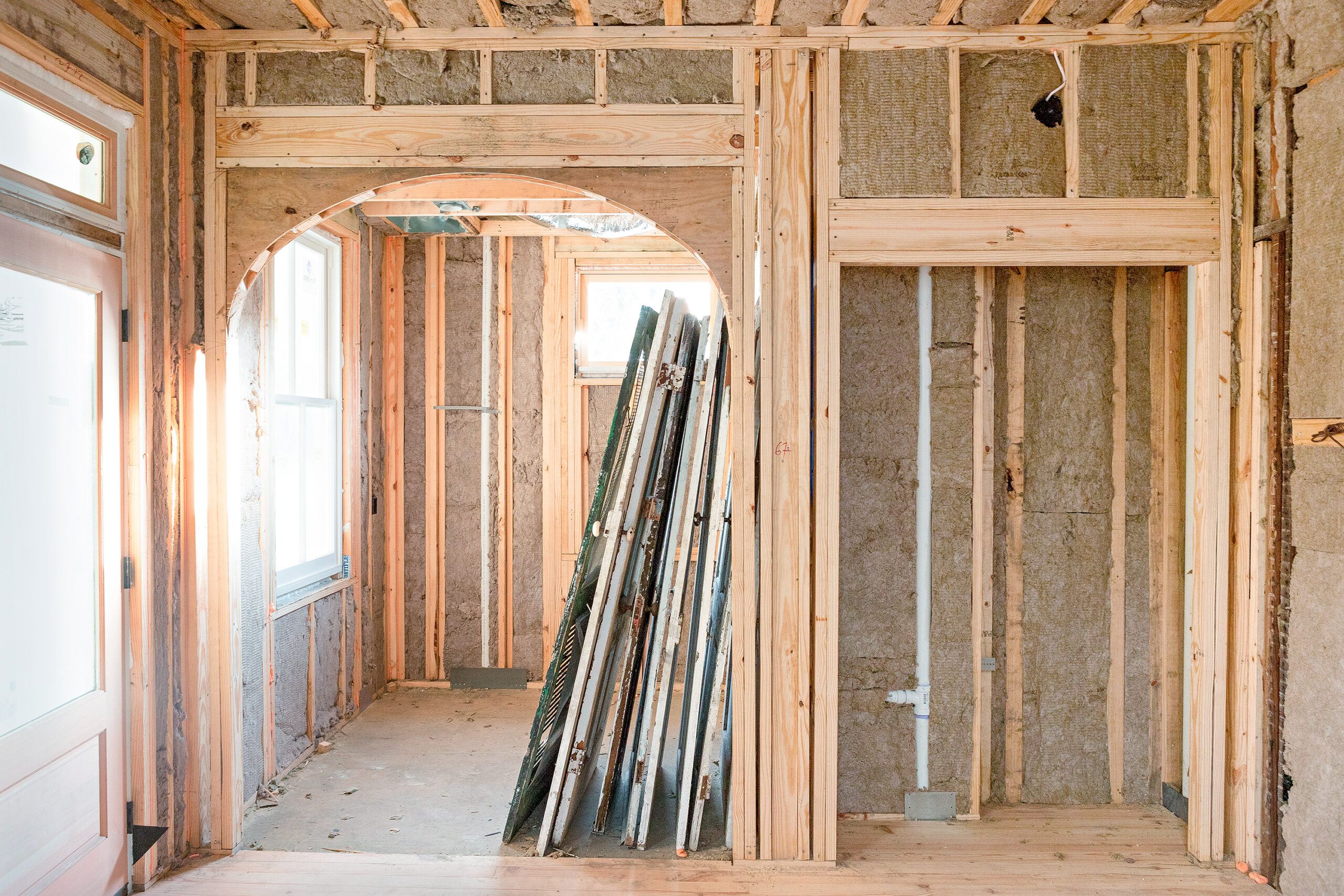
A back door leads to the downstairs guest suite, with an arch separating the bedroom and bath; the wide closet beside it awaits bifold doors.
Salvageable Woodwork
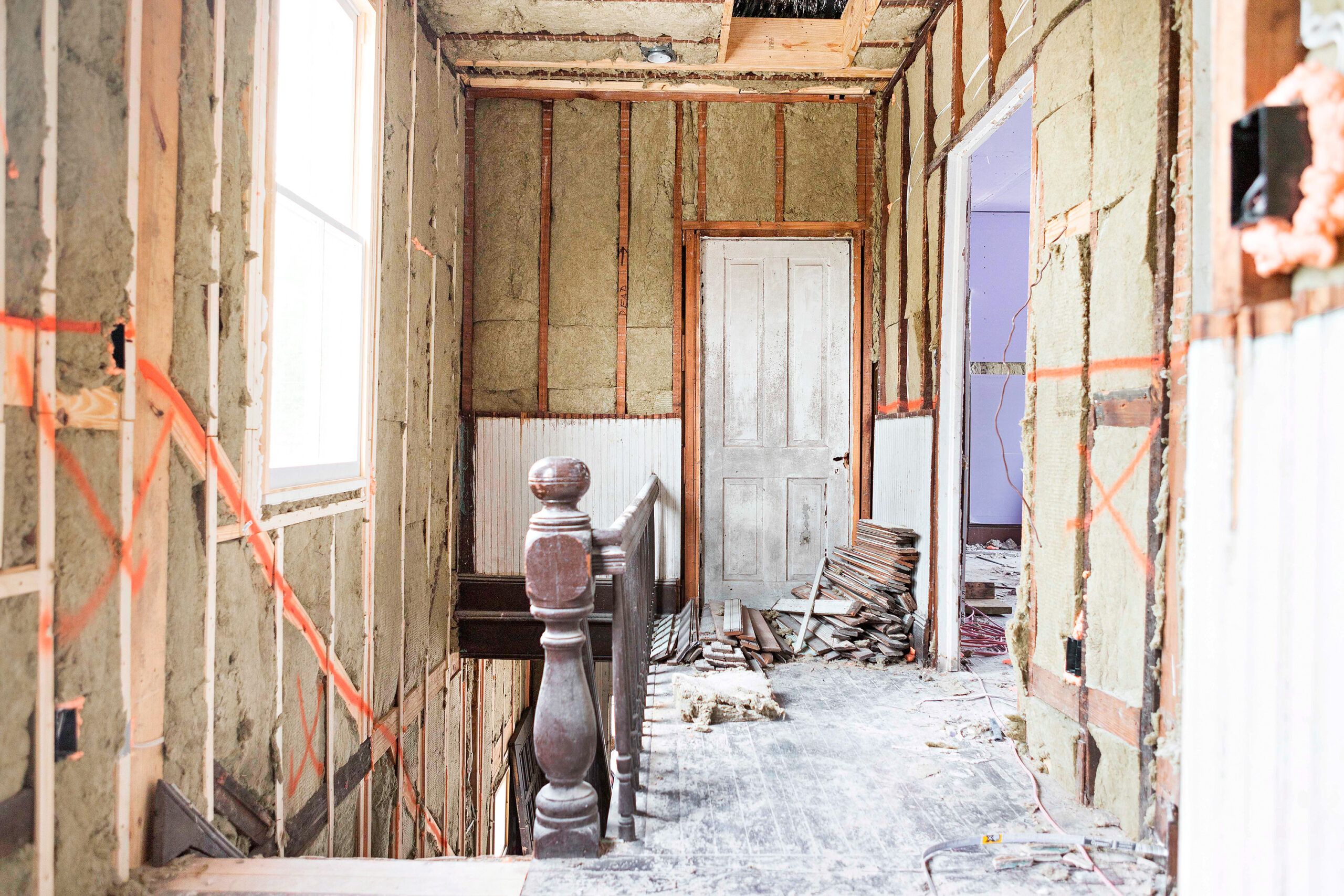
In the hallway at the top of the stairs, beadboard wainscoting that escaped the ravages of time will be restored and added to.
Engulfed by Vegetation
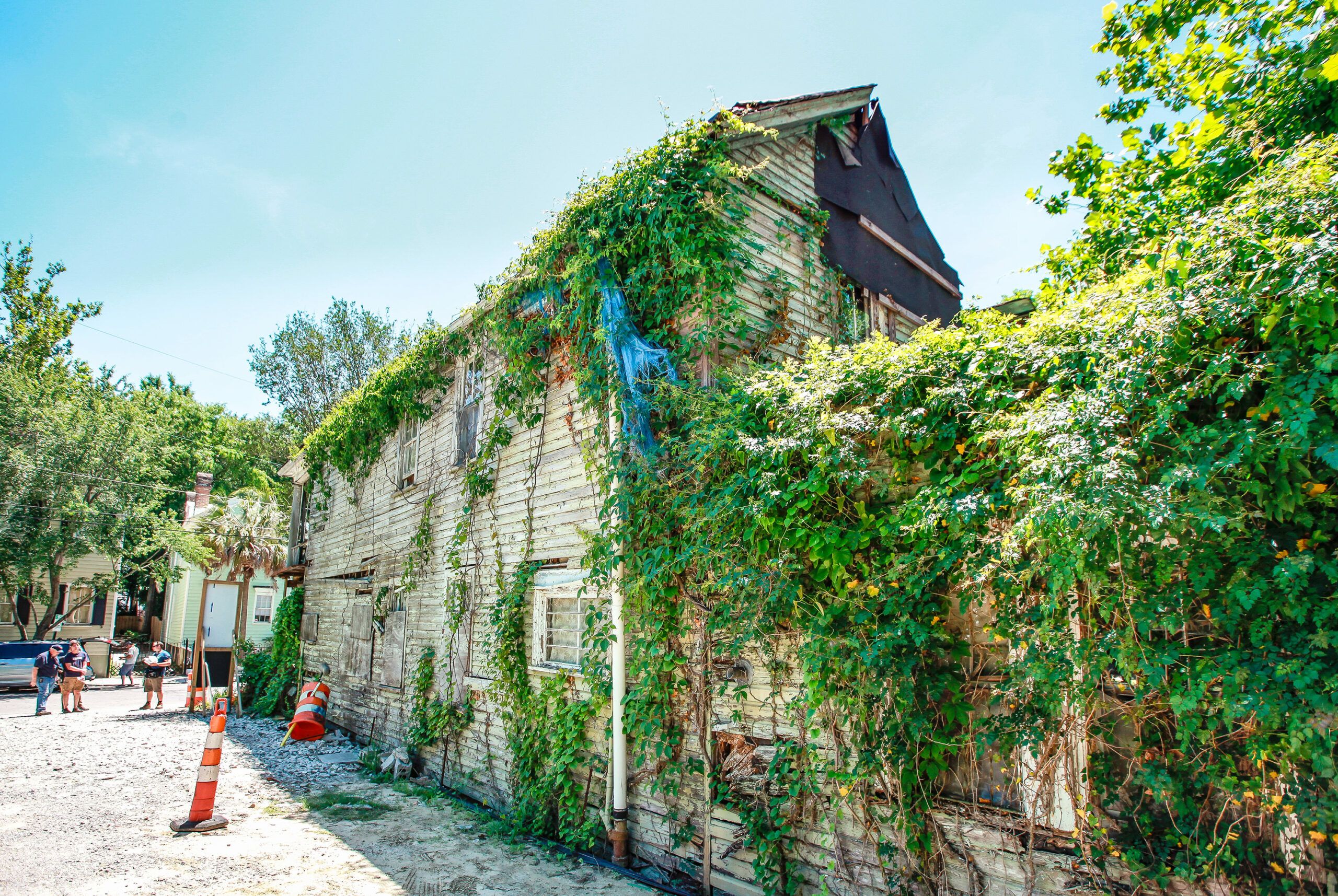
Vines and moss nearly engulfed the water-damaged house, where holes in the roof had opened it up to the weather.
Distressed Kitchen
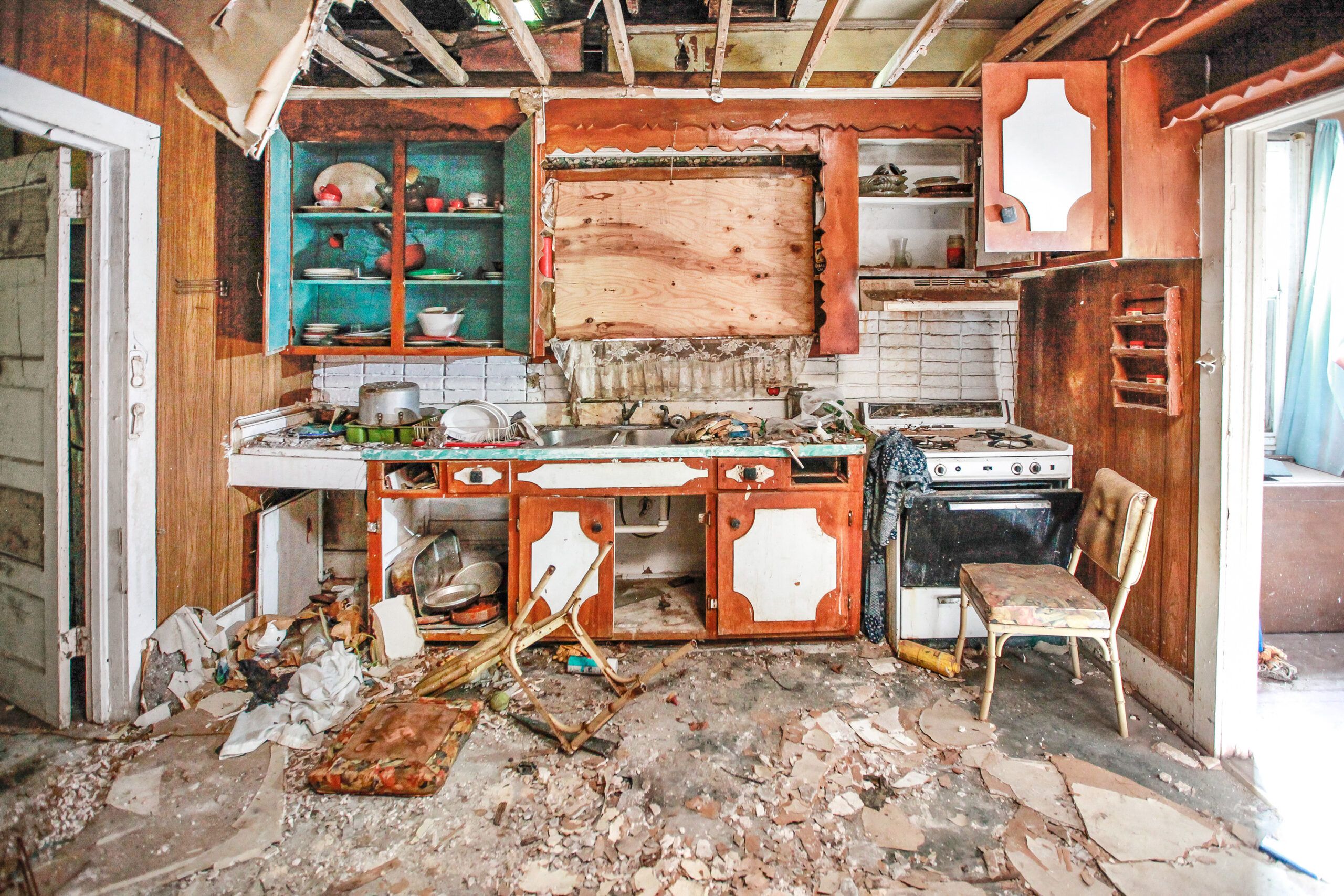
What remained of the kitchen Judith’s grandparents once knew. The space will become a guest bedroom.
Thanks to Brittany V. Lavelle Tulla, MSHP, proprietor and lead architectural historian, BVL Historic Preservation Research
